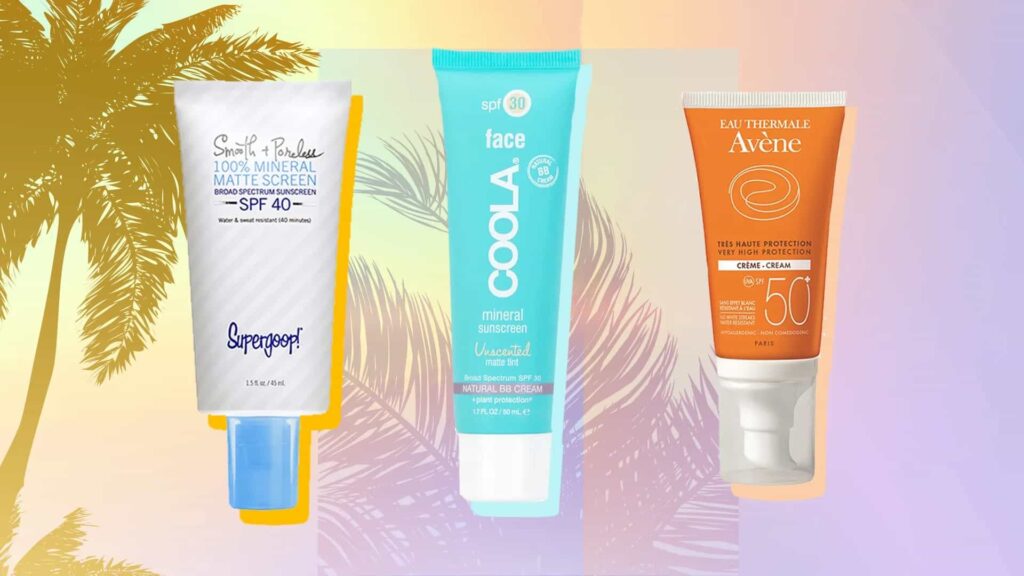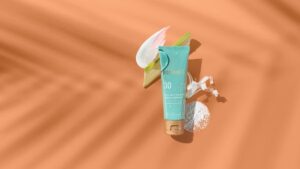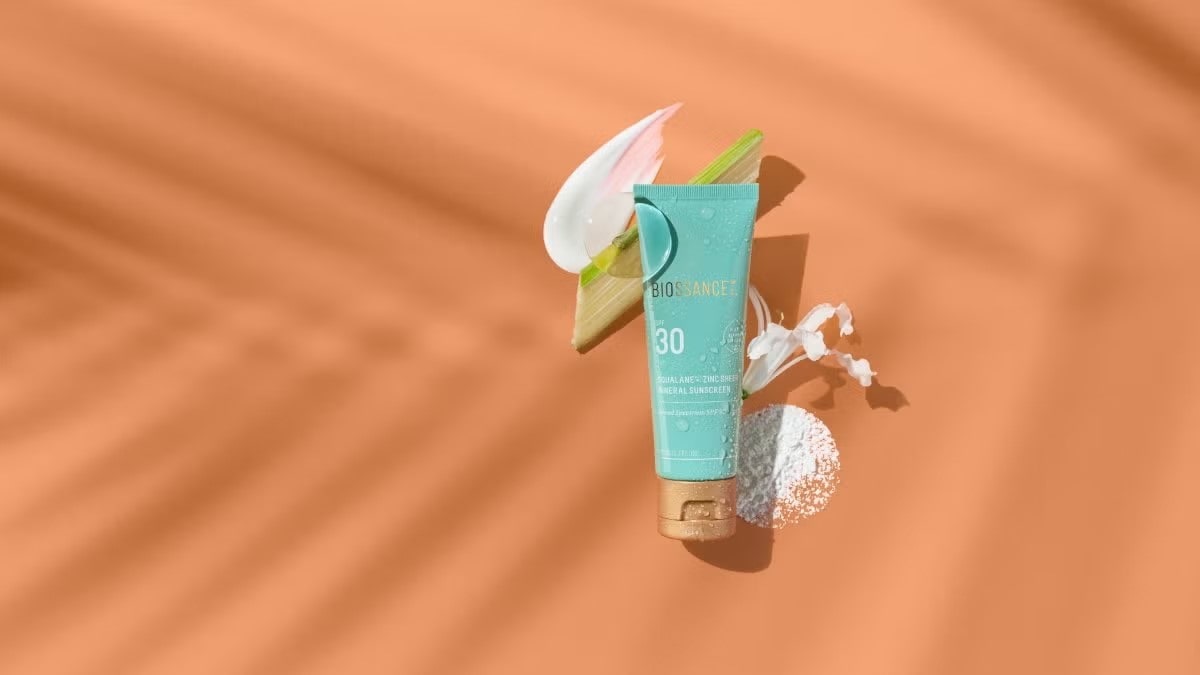It’s a lovely, sunny day and you’re finally getting away from your hectic schedule to spend some time outside. Sunscreen is essential whether you’re going to the beach, trek, or just relaxing in your backyard. Have you ever wondered, “How often should I reapply sunscreen?” So you’re not the only one. Many people are unaware of how often they need to reapply sunscreen to guarantee optimal protection from the sun’s damaging rays. In it, I will discuss the value of sunscreen, variables that influence how frequently to reapply it, and useful advice for maintaining the health and safety of your skin in the sun.
Understanding Sunscreen and Its Importance
Sunscreen is an essential part of skin care since it shields the skin from UV radiation’s damaging effects. There are two primary forms of UV radiation: UVA and UVB. While UVB rays cause sunburn and can directly damage skin cells’ DNA, raising the risk of skin cancer, UVA rays penetrate deeply into the epidermis, causing wrinkles and premature aging.
Types of Sunscreen
Sunscreen comes in two primary varieties: chemical and physical (or mineral). Chemical sunscreens convert UV rays into heat, which is subsequently expelled from the skin after being absorbed. Typically, they include substances like oxybenzone and avobenzone. On the other hand, particles like titanium dioxide and zinc oxide used in physical sunscreens form a physical barrier that scatters and reflects UV rays.
Factors Affecting Sunscreen Reapplication
Several factors determine how often you should reapply sunscreen:
SPF Rating: The degree to which sunscreen blocks UVB rays is determined by the Sun Protection Factor (SPF). More protection is offered by higher SPF ratings, however the duration of the protection is not increased. For example, SPF 30 filters out roughly 97% of UVB rays, and SPF 50 filters out roughly 98%.
Activity Level: You should reapply sunscreen more regularly if you’re swimming, perspiring, or towel-drying. Sweat and water can wash away sunscreen, decreasing its potency.
Time of Day: Between 10 AM and 4 PM, UV radiation is at its highest. To maintain continuous protection throughout these hours, you may need to reapply sunscreen more frequently.
Skin Type and Conditions: People with sensitive skin or fair complexion may need to reapply sunscreen more frequently. Furthermore, certain drugs or skin disorders may increase your skin’s vulnerability to UV damage.
Environmental Factors: Sunscreen should be reapplied more frequently because UV exposure can be increased by high altitudes and reflective materials like snow, sand, and water.
How Often Should You Reapply Sunscreen?
The general rule of thumb is to reapply sunscreen every two hours. However, this can vary based on the factors mentioned above. Here are some specific guidelines:
-
Every Two Hours
In most cases, this is the typical recommendation. Applying a broad-spectrum sunscreen with an SPF of at least 30 every two hours is essential for maintaining good protection, according to dermatologists and skincare experts. Given that damaging UV rays can pass through clouds and glass, this advice is still applicable on cloudy days and while you’re indoors near windows. Regular reapplication guarantees that your skin is protected from the sun’s harmful rays all day long.
-
After Swimming or Sweating
Water-resistant sunscreens are designed to keep you safe whether you’re swimming or doing other activities that make you perspire. Depending on the formulation, these sunscreens are intended to stay active for up to 40 or 80 minutes. Even though sunscreens are water-resistant, you should always reapply it as soon as you step out of the water or after perspiring profusely. By doing this, you can be sure that your skin will always be protected from UV radiation, which can lead to long-term damage and sunburn.
-
After Towel Drying
Your skin may unintentionally lose its sunscreen as you towel dry. The protective layer on your skin may be removed by the friction created by the towel, leaving it exposed to UV rays. After towel drying, remember to reapply sunscreen right away for continued protection against the sun. This is an important step, particularly if you’ve been swimming, perspiring, or spending a lot of time in the sun.
-
Before Heading Outdoors
Sunscreen should be applied 15 to 30 minutes before being outside for maximum effectiveness. This window of time enables the sunscreen to adhere to your skin in the right way and form a shield from the sun’s UV radiation. You may make sure that your skin is sufficiently protected from the sun’s rays from the minute you step outside by using sunscreen beforehand. This preventive measure lowers the chance of skin damage and helps to avoid sunburn.
Practical Tips for Effective Sunscreen Use

To make sure you’re getting the most out of your sunscreen, follow these practical tips:
- Use Generously: People frequently apply too little sunscreen, which lessens its protective power. Adults should use around one ounce of sunscreen—roughly the volume of a shot glass—for complete coverage. This quantity guarantees that every exposed skin region is sufficiently protected.
- Remember Important Subjects: When using sunscreen, several body parts are frequently forgotten. The back of the neck, the tips of the feet, the portion in your hair, and the ears are areas that are often overlooked, so be sure to pay extra attention to them. These regions need to be properly protected because they are equally prone to sunburn.
- Use SPF-containing lip balm: Your lips require protection as well because they are especially prone to sunburn. To protect them from damaging UV radiation, choose a lip balm with an SPF of at least 15. This is an essential step for complete sun protection.
- Combine with Other Protective Measures: Even while sunscreen is an essential part of sun protection, a more comprehensive plan should include it. Wearing sunglasses, wide-brimmed hats, and protective clothes will increase your protection. Additionally, when the sun is at its fiercest, which is usually between 10 a.m. and 4 p.m., seek shade.
- Verify Expiration Dates: Before using sunscreen, make sure to check the expiration date as sunscreen might lose its effectiveness over time. Old sunscreen might not offer enough defense. To keep your sunscreen effective and make sure it’s ready to protect you when you need it, store it in a cool, dry location.
Choosing the Right Sunscreen
With so many options on the market, choosing the right sunscreen can be overwhelming. Here are some factors to consider:
- Wide-ranging Defense: Ensuring a sunscreen provides broad-spectrum protection is essential when choosing one. This indicates that UVA and UVB photons are both targets for the sunscreen’s formulation. UVB rays are the main source of sunburn, but UVA rays can prematurely age your skin and produce wrinkles and age spots. Applying a broad-spectrum sunscreen lowers your chance of developing skin cancer and helps protect your skin from these damaging impacts.
- SPF Index: The degree to which a sunscreen shields your skin from UVB rays is indicated by the Sun Protection Factor (SPF) number. Select a sunscreen with an SPF of at least 30 to ensure proper protection. Although slightly greater protection is provided by higher SPFs, it’s crucial to realize that no sunscreen is 100% effective at blocking UV radiation. With an SPF of 30, it blocks out about 97% of UVB rays, making it a good option in most cases. To keep sunscreen effective, always reapply as instructed.
- Water-Resistant: Choose a sunscreen that is resistant to water if you intend to swim or participate in activities that generate perspiration. These sunscreens are made to last in the water or while you’re perspiring for a specific amount of time. To find out if the sunscreen is water-resistant for 40 or 80 minutes, read the package. To provide continuous protection, don’t forget to reapply after towel drying, swimming, or perspiring.
- Skin Type: When selecting a sunscreen, people with sensitive skin should exercise caution. Seek for items marked “hypoallergenic” and “fragrance-free” to reduce the possibility of irritation. When opposed to chemical sunscreens, mineral sunscreens, which have active components like titanium dioxide or zinc oxide, are frequently kinder to the skin. They are ideal for people with delicate skin types and allergies because they sit on top of the skin and reflect UV radiation.
- Formulation: There are numerous formulations of sunscreens on the market, including as lotions, creams, gels, sprays, and sticks. Choose the type that best meets your preferences and makes it easy for you to apply the appropriate amount. Each type has advantages. For dry skin, lotions and creams work great and can add moisture. Gels are frequently chosen for skin that is greasy or prone to acne. Sprays are convenient and work well on areas that are difficult to reach, but make sure to use them evenly and generously. Sticks are less prone to get into your eyes and are useful for specific regions like the face and ears.
Read Also: What Is Foundation In Makeup
Conclusion
One essential step in shielding your skin from the damaging effects of UV radiation is reapplying sunscreen. Contrary to popular belief, which holds that all you need to do is apply sunscreen once in the morning, the frequency of reapplication depends on some factors, including your skin type, the activities you participate in, the SPF level, and the surrounding conditions. Sunburn, early aging, and even skin cancer can be avoided by being aware of these variables and adding sunscreen reapplication to your daily sun protection regimen.







